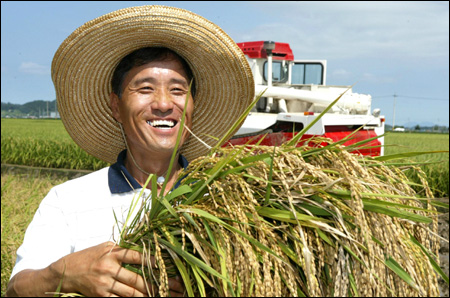What South Korea can teach Colombia about FTAs

Colombia Reports | Monday, 21 February 2011
What South Korea can teach Colombia about FTAs
Sebastian Castaneda
Colombia is currently negotiating a free trade agreement (FTA) with South Korea, a country that achieved industrialization by dismissing FTA-like measures. In turn, the Asian country, like Colombia, is waiting for the United States Congress to ratify an FTA. South Korea’s case, therefore, may help understand whether Colombia’s strategy to economically develop by signing FTAs is a sound strategy.
South Korea’s story of development is nothing short of a miracle. In 1950, the country was invaded by North Korea with the backing of the USSR and China. The U.S. led a United Nations coalition, which included Colombia as the only Latin American country providing troops, to defend South Korea. After the Korean War ended in 1953 in an armistice with 2.5 million casualties (including 163 Colombians), South Korea was completely destroyed; its people only surviving thanks to substantial food aid which came primarily from the U.S.
On paper, Colombia’s development in the 1950s was more promising than South Korea’s, but the present situation testifies otherwise. While Colombia’s and South Korea’s populations both border the 50 million mark, the latter’s gross domestic product (GDP) and GDP per capita are four times larger than Colombia’s. This is despite Colombia’s abundant natural resources and location geographically closer to the largest market in the world: the U.S. And Washington, to a large extent, is responsible for the developmental differences between Colombia and South Korea.
South Korea’s rise to become a newly industrialized nation in the 1980s is a case study of a U.S. promoted economic development. The U.S., as part of the Cold War’s ideological battle, not only underwrote Seoul’s security, but also played a fundamental role in its industrialization. The U.S. offered low tariffs to South Korean goods (as well as Japanese and Taiwanese), while the Asian nation maintained high tariffs on U.S. goods. These advantages, coupled with South Korea’s state-led development, catapulted South Korea to become the fifteenth largest economy in the world today and an industrial and technological powerhouse.
South Korea’s meteoric industrial development, however, came at the expense of its agricultural sector. From 1956 to 1970 the U.S. sent $800 million dollars ($6.5 billion in today’s money) worth of food. This resulted in low food prices and wages that were crucial for a state-led development based on added value exports, albeit devastating to the agricultural sector. While in the 1940s approximately 583,000 acres were used for wheat production, in 1968 that number decreased to 39,000 acres. This trend has reduced Korea’s food self-sufficiency (a strategic concern for most countries) from 56 percent in 1980 to 25.3 percent in 2004.
Despite these negative effects the South Korean government has decided to exploit its competitive advantage by signing an FTA with the U.S. and other nations including Colombia. The signed South Korea-U.S. FTA would greatly benefit the Asian nation’s industrial sector; it is calculated that the U.S. would lose 880,000 jobs over seven years. But the FTA will irreparably hit Korea’s agricultural sector; U.S. agribusiness, with its massive subsidies, would wipe out 45 percent of South Korea’s agricultural production. The good news for Seoul, however, is that by moving up the value chain it has the economic resources to acquire farmland in Africa and South America.
Colombia, for much of the last decade, has been in a similar position as South Korea in what relates to security. Washington, following its ‘War on Drugs’ policy and later its terrorism crusade, decided to support Colombia on its struggle with drug trafficking and the FARC by funding Plan Colombia. Plan Colombia has, therefore, been determinant in Colombia’s successes against the FARC, although the opposite is true for the ‘War on Drugs’.
Regarding Colombia’s economic development, Washington has showed little interest, even though promoting sustainable economic development would be crucial in partially tackling the drug problem. The most significant policy promoting trade has been the Andean Trade Promotion and Drug Eradication Act (ATPDEA). The act eliminated tariffs on a number of products from Bolivia, Colombia, Ecuador and Peru. The products, however, are mostly limited to textiles and primary products that do not contribute to industrial development. Moreover, the lengthy process to extend ATPDEA every year demonstrates that it is a cosmetic measure rather than policy to develop these countries.
Nevertheless, failing to get better terms from the U.S. rests largely on Colombia’s elite’s lack of political ability to pursue the country’s interests. Unlike South Korean leaders that obtained major concessions that essentially signified their industrialization, Colombian leaders have failed to achieve such bargains and instead enthusiastically adhere to disastrous trade policies imposed by Washington. This lack of political ability is more striking when Colombia has shouldered the burden of the U.S. misguided ‘War on Drugs’ with tens of thousands of dead.
Even those leaders that try to get more concessions from the U.S. not only fail, but also further Washington’s interests. This is what occurred when ex-president Alvaro Uribe sold Colombia as the counterweight to Chavez’ expansionist policies, but rather than requesting semi-permanent ATPDEA-like measures in return, he solicited an FTA instead.
While South Korea seeks to further its development by selling to Colombia its industrial goods, Colombia’s elite pretend to develop the country by selling coal, oil, coffee and flowers (and probably land, which, thanks to the paramilitaries, they own) to South Korea.





